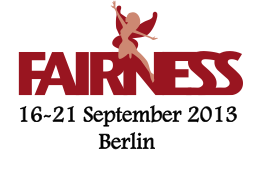Speaker
Mrs
Elena Lebedeva
(Justus-Liebig-Universität Gießen)
Description
The Compressed Baryonic Matter (CBM) experiment at the future FAIR facility will investigate high baryon density matter at moderate temperatures in A+A collisions from 3-35 AGeV. One of the key observables of the CBM physics program is electromagnetic radiation from the early fireball carrying undistorted information on its conditions to the detector. This includes detailed investigations of low-mass vector mesons in their di-electron channel. A clean and efficient identification of electrons is required for such measurements. In CBM the electron identification will be performed by a Ring Imaging Cherenkov detector and several layers of Transition Radiation Detectors. The RICH detector will be operated with CO2 radiator gas, MAPMTs as photodetector and spherical glass mirrors as focusing elements. A high quality of the mirrors in terms of reflectivity and surface homogeneity is required. In the first part of the contribution results on measurements of the mirror surface homogeneity are presented. Results on the feasibility studies of low-mass di-electron measurements with realistic detector response are discussed in the second part of the contribution.
Primary author
Mrs
Elena Lebedeva
(Justus-Liebig-Universität Gießen)
Co-author
Prof.
Claudia Hoehne
(Justus-Liebig-Universität Gießen)

